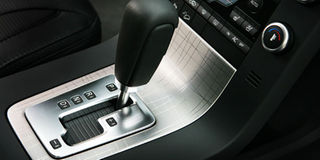How the automatic transmission works

How the automatic transmission works
What you need to know:
- There are no known disadvantages of the CVT gearbox. However there are challenges experienced when using and maintaining this transmission technology. The most common challenge is the fact that many motorists with CVT automatic transmissions do not even know that they have this kind of gearbox.
CVT means Continuously Variable Transmission or Constant Velocity Transmission. This type of automatic transmission provides more useable power, better fuel economy and a smoother driving experience than a traditional automatic transmission. Gears are shifted in a manner that matches the appropriate ratio for a particular driving situation.
The lowest gears are allocated to setting off, mid-range gears for acceleration and passing, while higher range gears are for fuel-efficient cruising. New users of the CVT automatic transmissions in recently introduced vehicles like Honda FIT, Honda Jazz and HRV, some of the post 2005 Toyota RAV4s.
Motorists need to understand that CVT gearboxes sound and operate differently when compared with conventional automatic gearboxes. In some of them when you step hard on the accelerator, the engine races as it would with a slipping clutch or a failing automatic transmission.
This is normal as the CVT adjusts the engine speed to provide optimal power for acceleration. Some CVTs are programmed to change ratios in steps, so that they feel more like a conventional automatic transmission.
Challenges
There are no known disadvantages of the CVT gearbox. However there are challenges experienced when using and maintaining this transmission technology. The most common challenge is the fact that many motorists with CVT automatic transmissions do not even know that they have this kind of gearbox.
As such they find the driving experience odd as the gearbox shifts continously rather than in steps. Sometimes motorists will think their gearboxes are defective as it feels like an automatic transmission with slipping gear clutches.
If you drive a used car and you are unsure whether it is a CVT check the gearbox dipstick because it will have CVT inscribed on it.
Another challenge is maintenance. CVT transmissions use special CVT oil. Many motorists and a few technicians do not know that a CVT gearbox must be serviced with the manufacturer recommend grade (viscosity) of CVT oil. You need to consult your user manual, dealer or check online. Do not attempt to service the CVT gearbox with generic ATF transmission oils designed for the conventional gearbox, this will make the gearbox fail.
About the automatic transmission
An automatic transmission, also called auto, self-shifting transmission, n-speed automatic (where is its number of forward gear ratios), or AT, is a type of motor vehicle transmission that can automatically change gear ratios as the vehicle moves, freeing the driver from having to shift gears manually. Like other transmission systems on vehicles, it allows an internal combustion engine, best suited to run at a relatively high rotational speed, to provide a range of speed and torque outputs necessary for vehicular travel. The number of forward gear ratios is often expressed for manual transmissions as well (such as six speed manual).
The most popular form found in automobiles is the hydraulic automatic transmission. This system uses a fluid coupling in place of a friction clutch, and accomplishes gear changes by hydraulically locking and unlocking a system of planetary gears.



